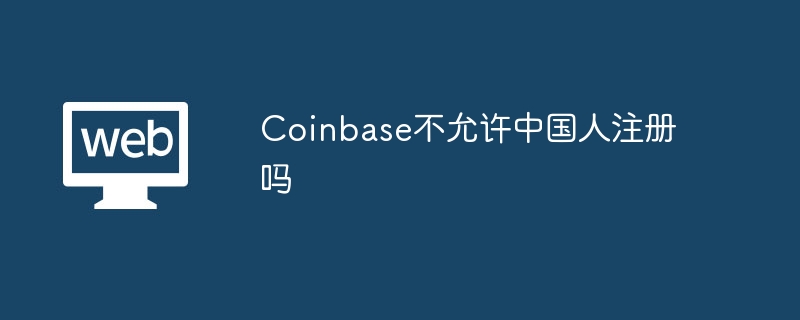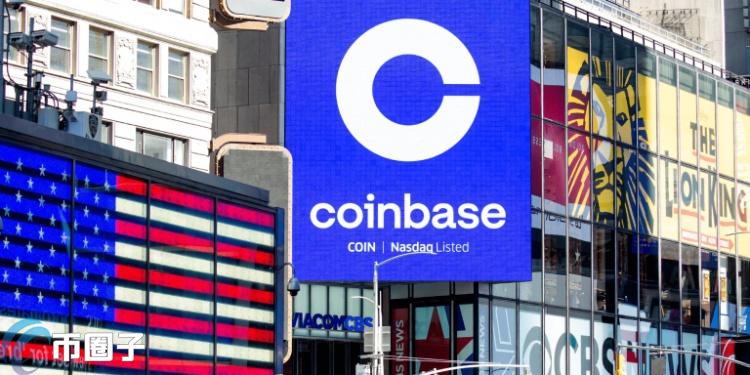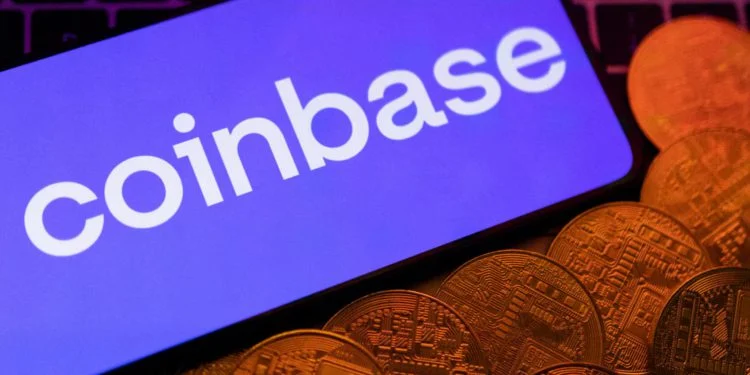Drawing on their extensive experience in fintech, Bridge aspires to build a future global payment network around stablecoins in order to challenge everything from Swift to credit cards.

A startup called Bridge, cofounded by ex-Square and Coinbase employees Zach Abrams and Sean Yu, has grand ambitions for the future of stablecoins. They want to build a global payments network around stablecoins that could challenge everything from Swift to credit cards.
And unlike other crypto-native firms developing within the stablecoin ecosystem, Bridge has the backing of some of the top generalist venture firms in Silicon Valley, including Sequoia, Ribbit, and Index, along with the blockchain-focused Haun Ventures. The company has raised $58 million in previously unannounced funding, including a fresh round of $40 million led by Sequoia and Ribbit, and customers including Elon Musk’s SpaceX and Coinbase.
“Fintech is deeply rational,” said Abrams in an interview with Fortune. “If you can do something that is faster, cheaper, and more economical, you win. And that's why I think stablecoins are going to eat the world.”
A stablecoin explosion, but are they really ‘stable’?
While stablecoins have seen massive growth over the past two years—industry leader Tether has a market cap of around $118 billion, while USDC sits at $34 billion—the asset class has also had to contend with several incidents that called into question whether they are truly ‘stable.’
In 2022, the collapse of TerraUSD—a so-called algorithmic stablecoin that maintained its $1 peg through a related cryptocurrency, as opposed to a fiat reserve—triggered a broader meltdown in crypto, leading to regulatory investigations and congressional hearings. Then in 2023, USDC briefly lost its peg on secondary markets upon disclosing that its issuer Circle had parked billions of its reserves with the collapsing Silicon Valley Bank (USDC quickly recovered on news the FDIC would backstop the bank’s deposits). And Tether, still the market dominator, has long faced accusations of opaque accounting.
Despite the challenges, and continued lack of federal legislation that would provide regulation for the nascent sector, stablecoins have managed to roar back, though there are still open questions of how much volume comes from real users, as opposed to bots and large-scale traders. TradFi companies like PayPal and VanEck have launched or backed their own stablecoins, while others such as Stripe have begun to integrate products like USDC into their offerings.
Still, the challenge for many companies who want to use stablecoins is building on-ramps and off-ramps to move fiat currency into and out of the crypto ecosystem, while also facilitating transfers across different types of stablecoins and blockchains. Dollar-backed options like USDC and Tether may be the most popular, but there are countless others with pegs to the Mexican peso or a basket of assets—and a single stablecoin might be issued across a dozen different blockchains.
In an interview with Fortune, Haun Ventures partner Chris Ahn—who first invested in Bridge’s seed round while working at Index—said there would be no need for Bridge if there were just one stablecoin on a single blockchain. Bridge’s value add, he said, is allowing developers to seamlessly move between fiat and stablecoins, and across different blockchains.
“The Stripe of crypto’
The pitch is simple. “We built Bridge as a low-level set of APIs that would enable companies to use a stablecoin rail without thinking about it,” as Abrams put it. But why would companies want that?
As crypto advocates like to point out, moving around fiat currency is slow and expensive—you often need to wait for bank operating hours for large transactions, and cross-border payments can come with massive fees and interminable waits. Stablecoins, at least in theory, offer low fees and instant settlement.
In Bridge’s ideal future, stablecoins will operate as the global payments rail, and Bridge will allow developers to seamlessly integrate. In that sense, you can think of it as a Web3 analog to Stripe, which helps businesses accept online payments, or Plaid, which makes it easy to connect an app to a bank account.
Investors told Fortune that Bridge stands out from other crypto-native firms because of the fintech experience of its founders, who worked at startups including Brex and Square. They believe this will help Bridge serve not only crypto firms, but also companies that operate primarily in fiat.
Bridge 已經擁有包括 SpaceX 在內的知名客戶,該公司使用 Bridge 在不同司法管轄區以不同貨幣收取付款,並透過穩定幣將其轉移到其全球金庫。 Bridge 也與區塊鏈 Stellar 和比特幣應用 Strike 等加密公司合作,為他們自己的穩定幣支付功能提供基礎設施。
Abrams 的前雇主 Coinbase 的一個客戶使用 Bridge 幫助用戶在 Tron 上的 Tether 和 Base(其自己的第 2 層區塊鏈)上的 USDC 之間進行傳輸。 「他們正在做的幫助傳統企業上鍊的工作非常重要,」Base 和 Abrams 的前創辦人 Jesse Pollak
The above is the detailed content of Bridge Wants to Take Stablecoins to the Next Level. For more information, please follow other related articles on the PHP Chinese website!
 Coinbase不允许中国人注册吗Feb 01, 2024 pm 05:57 PM
Coinbase不允许中国人注册吗Feb 01, 2024 pm 05:57 PMCoinbase是允许中国人注册的,但目前能否KYC认证未知,作为一家受监管的金融服务公司,Coinbase需要识别平台上的用户身份,接受的身份证明文件为美国的国家颁发的身份证件,例如驾驶执照或身份证,或者美国境外政府签发的带照片的身份证件、美国境外国民身份证、美国境外护照。
 Coinbase推出预发行市场!提供即将上架代币至多2倍的标准合约交易Jun 18, 2024 pm 10:40 PM
Coinbase推出预发行市场!提供即将上架代币至多2倍的标准合约交易Jun 18, 2024 pm 10:40 PM根据美国交易所Coinbase最新的公告指出,将为部分地区用户开放全新的「预发行市场」功能,用户将能够在交易所上交易即将上市代币的标准合约。TheBlock透露,该服务或将在下周一上线。Coinbase推出预发行市场紧跟着其他离岸中心化交易所(CEX)的脚步,Coinbase也在近期宣布,将为美国、英国及加拿大以外地区推出「预发行市场(prelaunchmarket)」,为即将上市的代币提供标准合约交易服务:Coinbase上的预发行市场,将让用户在可信赖且安全的平台上,参与即将推出之项目的价格
 Coinbase申请DOGE、LTC和BCH期货交易!迫使SEC认定PoW币非证券Mar 22, 2024 am 09:41 AM
Coinbase申请DOGE、LTC和BCH期货交易!迫使SEC认定PoW币非证券Mar 22, 2024 am 09:41 AM美国最大的加密货币交易所Coinbase最近在衍生品交易市场上有了新的动作。自从去年8月获得批准后,允许向符合条件的美国客户提供受监管的加密货币期货交易,Coinbase推出了比特币期货、以太坊期货以及「微型」比特币期货、以太坊期货等产品。Coinbase计划推出DOGE、LTC和BCH期货3月7日,CoinbaseDerivatives向美国商品期货交易委员会(CFTC)提交了三份独立文件,计划推出狗狗币、莱特币和比特币现金的现金结算期货合约产品。只要CFTC未反对,这些期货产品最早将于4月1
 mfers创始人发行Base链Meme币mfer!单日暴涨2万倍 市值达2.3亿美元Mar 31, 2024 am 10:21 AM
mfers创始人发行Base链Meme币mfer!单日暴涨2万倍 市值达2.3亿美元Mar 31, 2024 am 10:21 AM以太坊L2Base的模因热潮仍在延烧,知名模因NFT项目Mfers创始人Sartoshi今日发布模因币$mfer,总供应量10亿颗,并分配20%的代币空投给持有mfer生态NFT的社群、艺术家等,其余全部投入流动池。市值不到一天内迅速冲破2.3亿美元,交易量突破6,530万美元,迅速成为今日市场焦点。$mfer单日飙涨超2万倍DexScreener数据显示,$mfer从上线时的0.00001419美元,一路飙涨,在今晨约10点来到最高0.2870美元,涨幅惊人地超过2万倍。截稿前暂报0.2396
 CME拟推比特币现货交易!加密货币交易所Coinbase闻讯暴跌超9%Jun 04, 2024 pm 05:44 PM
CME拟推比特币现货交易!加密货币交易所Coinbase闻讯暴跌超9%Jun 04, 2024 pm 05:44 PM全球最大期货交易所、芝加哥商品交易所集团(CMEGroup)在昨日传出计划推出比特币现货交易,已与想要在受监管市场上买卖比特币的交易商展开讨论,目前CME已提供比特币期货交易,若引入现货比特币交易,将让投资者能更轻松进行基差交易。或许是受此消息冲击,美国上市加密货币交易所Coinbase股价在16日惨跌9.48%至199.07美元。面临强大竞争对手如果CME进军比特币现货交易,对Coinbase来说将是个坏消息,虽然Coinbase的大部分收入仍来自向散户收取的交易手续费,第一季财报显示,其消费
 Coinbase财报:第一季净利逾11亿美元!持有9千枚BTC、9万枚ETHMay 03, 2024 pm 03:40 PM
Coinbase财报:第一季净利逾11亿美元!持有9千枚BTC、9万枚ETHMay 03, 2024 pm 03:40 PM本站(120bTC.coM):美国合规交易所Coinbase在2024年第一季创造了16亿美元的收入,较上去年同期增长112%。净利逾11亿美元。而Coinbase自身因投资持有的加密资产,在本季增值认列了6.5亿美元的收益,股价持稳在200美元上方。交易收入大增,第一季营收达16亿美元Coinbase在2024年第一季创造了16亿美元的收入,较上去年同期增长112%。其中国际交易所(International)贡献了17%的收入。第一季消费者交易收入为9.35亿美元,季增99%。第一季消费者交
 Base生态出现类似EigenLayer的再质押协议Overload!可质押任意ERC-20代币May 08, 2024 am 09:19 AM
Base生态出现类似EigenLayer的再质押协议Overload!可质押任意ERC-20代币May 08, 2024 am 09:19 AM本站(120BTc.coM):Base生态出现类似EigenLayer的再质押协议Overload,其亮点是可以质押任意ERC-20代币而不限于ETH,另一方面该协议也不会消减节点营运者,近一步降低再质押者的资产风险。再质押介绍再质押是指将流动性质押代币(LST)再次质押,除了保护主网的同时也可以保护其他外部网络。例如用户可以选择将ETH质押至Lido协议以保护以太坊网络安全,并将其质押证明的代币stETH质押至EigenLayer,以保护更多其他网络,获得更高的收益。EigenLayer是首创
 Coinbase采用比特币闪电网络加速交易处理Apr 04, 2024 pm 04:40 PM
Coinbase采用比特币闪电网络加速交易处理Apr 04, 2024 pm 04:40 PMCoinbase加入了Binance等集成该解决方案的著名加密货币交易平台行列。美国加密货币交易所Coinbase终于开始整合比特币闪电网络,此前该交易所首席执行官BrianArmstrong已多次承诺将进行此项整合。基于闪电网络的支付基础设施提供商Lightspark宣布,它已被加密货币交易所选中,以促进比特币闪电网络的整合。这将有助于加速比特币闪电网络的整合,以更快地实现闪电网络的普及化。根据此次合作,Coinbase将利用Lightspark的远程密钥签名实现方式。这将允许Coinbase

Hot AI Tools

Undresser.AI Undress
AI-powered app for creating realistic nude photos

AI Clothes Remover
Online AI tool for removing clothes from photos.

Undress AI Tool
Undress images for free

Clothoff.io
AI clothes remover

AI Hentai Generator
Generate AI Hentai for free.

Hot Article

Hot Tools

Safe Exam Browser
Safe Exam Browser is a secure browser environment for taking online exams securely. This software turns any computer into a secure workstation. It controls access to any utility and prevents students from using unauthorized resources.

PhpStorm Mac version
The latest (2018.2.1) professional PHP integrated development tool

MinGW - Minimalist GNU for Windows
This project is in the process of being migrated to osdn.net/projects/mingw, you can continue to follow us there. MinGW: A native Windows port of the GNU Compiler Collection (GCC), freely distributable import libraries and header files for building native Windows applications; includes extensions to the MSVC runtime to support C99 functionality. All MinGW software can run on 64-bit Windows platforms.

WebStorm Mac version
Useful JavaScript development tools

mPDF
mPDF is a PHP library that can generate PDF files from UTF-8 encoded HTML. The original author, Ian Back, wrote mPDF to output PDF files "on the fly" from his website and handle different languages. It is slower than original scripts like HTML2FPDF and produces larger files when using Unicode fonts, but supports CSS styles etc. and has a lot of enhancements. Supports almost all languages, including RTL (Arabic and Hebrew) and CJK (Chinese, Japanese and Korean). Supports nested block-level elements (such as P, DIV),






